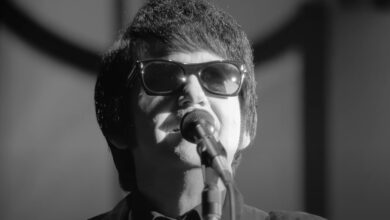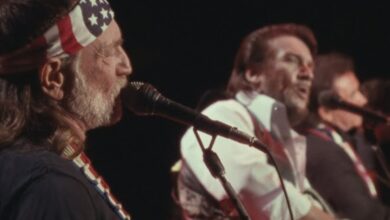The Righteous Brothers’ “(You’re My) Soul and Inspiration” Revives Blue-Eyed Soul Glory in 1966
When “(You’re My) Soul and Inspiration” hit the airwaves in 1966, it was more than just another soul-infused pop ballad—it was a declaration that The Righteous Brothers could thrive beyond the shadow of Phil Spector. Released on the Verve label after their departure from Spector’s Philles Records, the song soared to No. 1 on the Billboard Hot 100, staying there for three weeks. It became their second chart-topping single, following the massive success of “You’ve Lost That Lovin’ Feelin’,” and proved that their signature blend of blue-eyed soul and orchestral drama could stand on its own. For the duo and for pop music at large, “Soul and Inspiration” was a critical bridge between producer-driven hits and artist-driven storytelling.
The Righteous Brothers—Bill Medley and Bobby Hatfield—emerged from the early ‘60s California scene, initially forming their act within a group called The Paramours. Their style, however, was anything but regional. Drawing heavily from gospel, doo-wop, and deep soul traditions, they brought an emotional intensity that set them apart from the polished pop acts of the time. Medley’s deep baritone and Hatfield’s soaring tenor created a vocal dynamic rarely seen in pop duos, earning them the label “blue-eyed soul” for their ability to channel the raw emotion of traditionally Black soul music through a white, mainstream lens. Their partnership with Phil Spector propelled them into stardom, but it was what they did after that partnership ended that truly defined their artistry.
The inspiration for “(You’re My) Soul and Inspiration” came in the wake of a major career turning point. After breaking ties with Spector—who had famously produced “You’ve Lost That Lovin’ Feelin’” with his trademark “Wall of Sound”—Medley took it upon himself to step into the producer’s chair. Wanting to prove that the duo could replicate that same emotional depth and grandiosity on their own terms, Medley began working on “Soul and Inspiration,” a song originally co-written by Barry Mann and Cynthia Weil, the same songwriting duo behind “Lovin’ Feelin’.” The song had been shelved during their time with Spector, but Medley resurrected it with renewed purpose and a determination to match, if not exceed, their earlier triumphs.
The production of “Soul and Inspiration” was a direct response to the sound Spector had popularized, but it was uniquely shaped by Medley’s sensibilities. Recorded in Los Angeles, the track features sweeping string arrangements, thundering percussion, and the same kind of emotional crescendos that had made their earlier work iconic. Medley meticulously orchestrated the instrumentation to build tension and drama, culminating in a desperate, pleading vocal performance that remains one of the most affecting in the duo’s catalog. Unlike Spector’s Wall of Sound, which could at times drown out the singer, Medley’s approach gave the voices room to breathe—particularly Hatfield’s aching vocal runs in the song’s final minute.
Upon release, the song was an immediate commercial success. It topped the Billboard Hot 100 in April 1966 and was one of the year’s biggest hits. Critics praised its emotional urgency and lush production, noting that The Righteous Brothers had managed to capture lightning in a bottle for a second time—this time without the guiding hand of the industry’s most notorious perfectionist. For fans, the song felt like a reaffirmation: the voices they loved were still here, and they still had something vital to say. It also performed well internationally, charting in the UK and other markets, helping to expand the duo’s global reach.
Culturally, “Soul and Inspiration” arrived at a time when American pop was in flux. The British Invasion was in full swing, Motown was redefining soul, and folk-rock was gaining ground. Yet here was a song steeped in classic R&B drama, unapologetically emotional and cinematic. It reminded listeners of the enduring power of the ballad—especially one delivered with sincerity and grandeur. In a musical landscape veering toward experimentation and political messaging, “Soul and Inspiration” reaffirmed the simple, universal language of love and loss.
For The Righteous Brothers, the song marked a rebirth. Their success without Spector proved that they weren’t just interpreters of someone else’s vision, but artists in their own right. Medley’s role as producer opened new avenues of creative control, and Hatfield’s vocal prowess continued to shine. The track allowed them to continue touring at high-profile venues and appear on major television shows, cementing their place among the era’s most respected vocal acts. It also laid the groundwork for a string of follow-up hits, though none would quite reach the dramatic heights of “Soul and Inspiration.”
Its influence on the genre was subtle but significant. The song showed that soul music could be performed outside of its traditional boundaries—by white artists, with orchestral arrangements, and still carry the same emotional weight. It inspired later acts like Hall & Oates, who blended soul and pop with a similar reverence. Even into the 1970s and ‘80s, the echoes of “Soul and Inspiration” could be heard in power ballads and love songs that aimed to fuse vocal drama with instrumental scale.
Over the years, “(You’re My) Soul and Inspiration” has been covered by several artists, though few matched the passion of the original. Donny and Marie Osmond took a softer, more saccharine approach in the late ‘70s, while The Oak Ridge Boys added a country twist. But it is the original recording that continues to define the song. Its emotional honesty and musical sweep are hard to replicate, and most tributes simply pay homage rather than attempt to outdo it.
At the time of the song’s release, The Righteous Brothers were navigating personal challenges as well. The pressure to follow up their initial success was immense, and Medley’s assumption of the producer role added another layer of responsibility. But rather than falter, the duo thrived. The success of “Soul and Inspiration” gave them renewed confidence and a sense of artistic independence, even as the music industry around them continued to evolve.
Today, the song remains a staple of oldies radio and romantic playlists. Its heartfelt message, haunting melody, and stirring vocals ensure that it continues to resonate with new generations. In 2003, Rolling Stone ranked “You’ve Lost That Lovin’ Feelin’” as the most played song on radio and television in the 20th century, and while “Soul and Inspiration” didn’t match that numerical feat, it is often seen as its emotional sequel—a continuation of a sound and style that had captivated millions.
The track’s orchestration, narrative arc, and sheer vocal intensity helped define the power ballad long before the term entered popular use. It demonstrated how emotional scale and pop accessibility could coexist, and it set a precedent for how male vocalists could express vulnerability without losing strength. Its echoes would ripple through pop, soul, and even soft rock for decades to come.
Though no longer dominating charts, The Righteous Brothers have received posthumous accolades and continued reverence. Bobby Hatfield passed away in 2003, but Bill Medley has kept the group’s legacy alive through live performances and tributes. “(You’re My) Soul and Inspiration” is always a centerpiece—a reminder of what the duo accomplished on their own terms.
Ultimately, the song endures because it speaks to a universal human experience with a voice that feels both personal and towering. It was a moment of defiance, of reinvention, and of emotional truth. In stepping out from under the shadow of their most famous producer, The Righteous Brothers crafted a second masterpiece that proved the soul of their music was, and always had been, their own.



